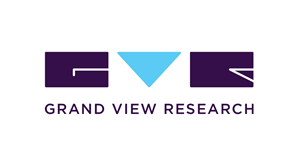Spray Foam Market Summary
The global spray foam market size was estimated at USD 2.34 billion in 2023 and is projected to reach USD 3.63 billion by 2030, growing at a CAGR of 6.5% from 2024 to 2030. The market is poised for steady growth due to the increasing awareness about the importance of energy-efficient construction materials and their role in reducing the carbon footprint of buildings. The growing emphasis on sustainable infrastructure and the implementation of stricter building energy codes are further expected to contribute to the adoption of spray foam insulation across both residential and commercial sectors.
The rising construction and renovation activities worldwide are also playing a crucial role in driving market growth. Spray foam insulation is widely used in new building projects and the retrofitting of existing structures due to its excellent thermal insulation, air-sealing, and moisture-control properties. It significantly enhances energy efficiency by reducing heating and cooling costs while contributing to improved indoor comfort. Furthermore, government initiatives promoting energy conservation and the use of green building materials have accelerated product adoption across various regions.
In addition to energy efficiency, spray foam insulation helps minimize the environmental impact of buildings by reducing energy consumption and greenhouse gas emissions. The product’s versatility allows it to be used in multiple applications, including roofing, wall insulation, and flooring, which makes it an essential material in the modern construction industry. Manufacturers are increasingly investing in the development of eco-friendly and low-emission spray foam formulations to comply with environmental regulations and meet the growing consumer demand for sustainable products.
Key Market Trends & Insights
- The North America region dominated the spray foam market with a revenue share of 42.5% in 2023. The dominance of the region is attributed to the widespread adoption of energy-efficient construction technologies, stringent regulatory frameworks, and high awareness regarding green building practices. The strong presence of leading manufacturers and rising residential and commercial construction activities are further contributing to the regional market expansion.
- By product, the open-cell foam segment held the largest revenue share in 2023 at 67.2%. This segment’s growth is primarily due to its cost-effectiveness, excellent sound absorption, and suitability for interior applications such as walls, ceilings, and attics. Open-cell foam’s ability to expand and fill cavities efficiently makes it a preferred choice for residential insulation projects.
- By application, the construction segment dominated the market with the highest revenue share of 63.0% in 2023. The rapid growth of this segment can be attributed to increasing investments in new infrastructure projects, the rise of green building trends, and the continuous demand for materials that improve structural energy performance and reduce maintenance costs.
Order a free sample PDF of the Spray Foam Market Intelligence Study, published by Grand View Research.
Market Size & Forecast
- 2023 Market Size: USD 2.34 Billion
- 2030 Projected Market Size: USD 3.63 Billion
- CAGR (2024-2030): 6.5%
- North America: Largest Market in 2023
Key Companies & Market Share Insights
Some of the key players operating in the market include BASF SE, Huntsman International LLC, Johns Manville, Dow, and CertainTeed, LLC.
- Huntsman Building Solutions is the leading spray polyurethane foam business. It has an icynene polyurethane insulation brand, which is available in open cell and closed cell, and used for interior and exterior construction applications.
- BASF SE is one of the prominent chemical producers in the world, located in Ludwigshafen, Germany.BASF manufactures both open-cell spray and closed-cell polyurethane foam products for residential and commercial construction.
Key Players
- CertainTeed, LLC (Saint-Gobain)
- Covestro AG
- Honeywell International Inc.
- NCFI Polyurethanes
- Henry Company
- RHH Foam Systems
- Rhino Linings Corporation
- BASF SE
- Huntsman International LLC
- Johns Manville
- Dow
Explore Horizon Databook – The world's most expansive market intelligence platform developed by Grand View Research.
Conclusion
The spray foam market is expected to continue expanding due to rising energy efficiency standards, increasing construction activities, and the growing focus on sustainable building materials. The product’s ability to reduce energy loss, enhance indoor air quality, and provide long-term durability makes it a preferred insulation solution worldwide. As global initiatives to curb carbon emissions intensify, the adoption of environmentally friendly spray foam formulations is anticipated to accelerate. Continuous innovation in product development and the integration of advanced materials will play a vital role in shaping the future of the market, contributing to energy-efficient and sustainable construction practices globally.


